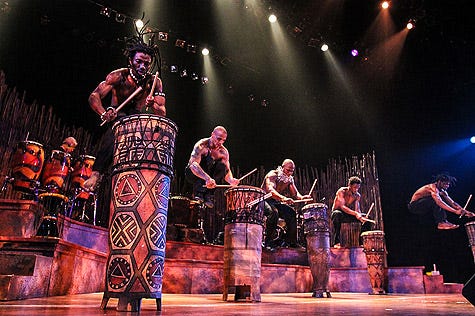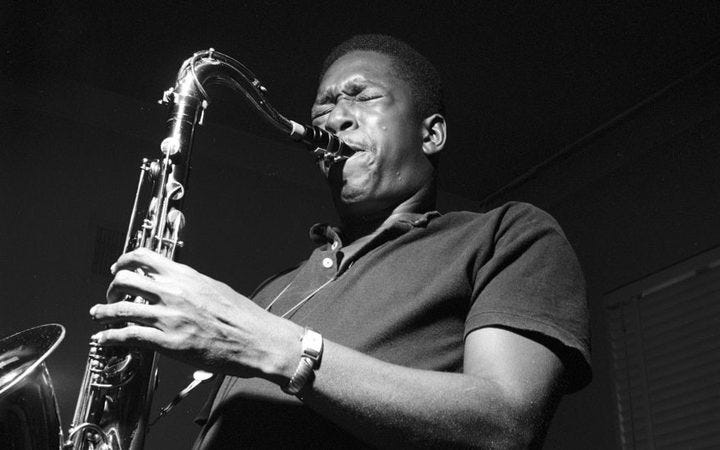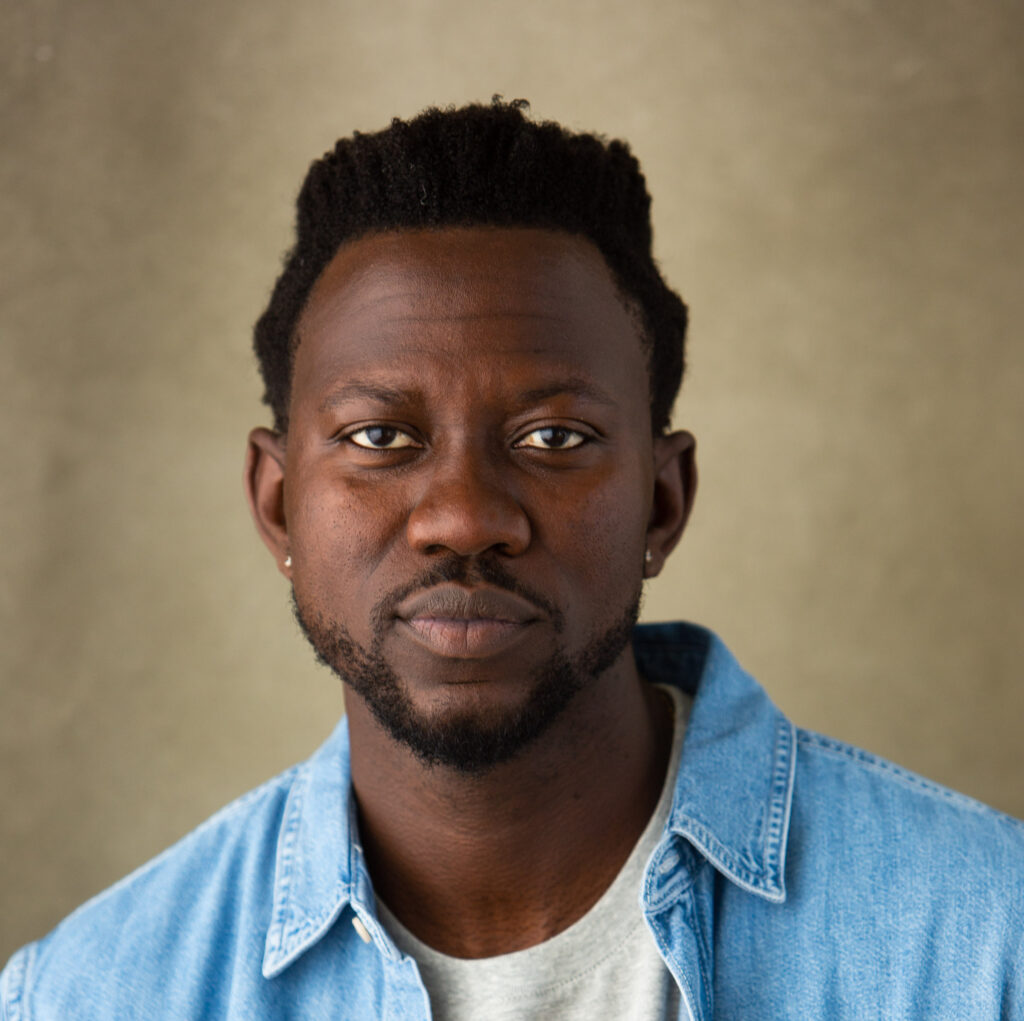Empathy is an integral part of the innovation process and a foundation for creative development.

Empathy — a prerequisite for solving “wicked problems” — is the ability to understand and share the feelings of others.
The design thinking approach to innovation, as popularised by Stanford d.schooland the global design firm IDEO, has emphasized the concept of empathy to make it inseparable from the innovation process.
Leading innovative companies such as Apple, Amazon, and Google use design thinking on a day-to-day basis to come up with new products and services. Their innovation process kicks off with empathizing with the people they are solving problems for.
So how does the innovator build empathy? Are there tools out there that can magnify shared understanding with people that you want to solve problems for?
Let’s look at a powerful tool that we have used to build empathy for centuries now — Music.
And it all starts with the beat.
Drums: The Internet of Rhythms
African drums, built out of wood and animal skin, are a crucial instrument in several genres of music.
The tonal complexity these drums create can dramatically alter the soundscape of musical experiences. The dexterity and skill of the drummer can make these drums talk, communicating beats through cohesive rhythms and patterns.
The drum has been a staple of the African musical heritage for centuries and continues to be a preserver of culture and history.
These drums were not just musical instruments.
As ancestors to our modern mobile phone, these drums were the predecessors of long-distance communication. And the inventors behind this classic technology were the skilled African beat makers with their complex rhythms.
In his 412-page book on the evolution of information theoryThe Information: A History, a Theory, a Flood,12 James Gleick begins with a first chapter titled “Drums That Talk.”
In this chapter, he described how, for the longest time, European explorers in Sub-Saharan Africa had no idea that drums conveyed information.
In the European cultures, a drum could be used to transmit small messages or alerts such as “attack” or “retreat,” but the Europeans could not conceive of talking drums — drums that communicated far more nuanced messages.
The musical correspondence that was developed across African villages was a technology that was much sought out in Europe at the time.
Similar to the binary language of zeros and ones, the drumbeat of these talking drums had its encoded language in the form of drum strikes and silences that traveled as pockets of sound waves.

It was a rhythmical version of Morse code before Morse code was invented by Samuel Morse in the nineteenth century. The Morse code transmitted messages through a series of clicks, tones, and lights.
The Communicative Gene
From the drum beats to worldwide mobile subscriptions estimated to be around 5.11 billion unique mobile users in 2018, humans have always found ways to communicate with one another.
As social creatures, communicating through words, images, sounds, symbols, and even drums has allowed us to pass down stories, understand the past, develop languages, and empathize with one another.
We build social cohesion and community through various communicative languages.
Communities share stories and language to express meaning.
Whether it’s through cave paintings, pictorial hieroglyphic scripts, or storytelling around bonfires or modern forms of communication that carry binary codes through the air, communicating with one another is buried deep in our DNA.
The necessity to communicate has spurred a lineage of some of our important modern inventions, including the telegraph, radio, television, telephones, and the internet.
Communication with one another is the foundation on which empathy is built.
Music — the empathy builder
Empathy is the ability to put yourself in the shoes of others, to completely understand their struggles, point of view, and aspiration.
It is very important for designers and innovators. To build solutions, you have to get in tune with the problem, have an in-depth understanding of it. That’s the only way you can begin creating valuable solutions.
That’s how my twenty-two-year-old me took solace in the words of a Rastafarian from Trench Town, Jamaica.
Music allows us to bridge borders.
It builds a highway for diverse stories.
Similar to the design process that innovators adopt, musicians pull on the sources around them to create empathy. Starting out with their own stories and then the stories of others around them, musicians ignite change through empathy.
Product designers have used this tool to innovate.
Former Nike exec and CEO of Superheroic, Jason Mayden, through years of innovating products for the top athletes and entertainers, shared with me how he found solace in the music of Nas and John Coltrane.
He gravitated to the music of these genre-defining musical icons because of “Sonic artistry that was amplified by the honest translation of their pain into narratives, narratives that didn’t have words but rather feelings. I’ve always wanted to create products and experiences that enhance what people feel,” Jason explained over a WhatsApp message.
{Insert Picture of John Coltrane playing his saxophone}

Understanding that music is great for emotional communication, composers are the best in capturing and transferring feelings.
“As a tool for activation of specific thoughts, music is not as good as language,” neuroscientist Daniel Levitin noted in his book — This Is Your Brain on Music.“ As a tool for arousing feelings and emotions, music is better than language. The combination of the two — as best exemplified in a love song — is the best courtship display of all.”
This courtship of language and emotions affects our brain and behavior in the most unique way that only music can simulate. The importance of language in the innovator’s design process cannot be understated.
Language is the communication tool that activates our thoughts.
It is also what empowers us with information about current and historical events, enabling us to ask the right questions and define human-centered problem statements.
“Language is the foundation of discovery.” Jason Mayden talked about the importance of language in his design process.“And I love language, I love words, because they frame reality in a way that can be documented. And when you are able to manipulate language, and have clear questions you can create answers that people never knew were possible.”
“All innovation starts with the question,” Jason emphasized.
Different perspectives and formulating the right questions
Music has a unique way of connecting us with the ideas and feelings from different perspectives.
Kendrick Lamar — an American rapper uses his music to paint vivid pictures about his unique background and perspective.
The 13-time Grammy Award winner knows that music as a medium is more accessible to a wide spectrum of people and he uses it to tell compelling stories about the happenings in his hometown — Compton, California.
On the same Breakfast Club interview, when asked whether messages were better conveyed through music as opposed to saying them in a magazine or radio interview, Kendrick Lamar responded, “All the time, because people can see or feel your sentiment.”
In the vein of musicians like himself, Kendrick uses his music to tell stories about where he is from. Building empathy across invisible lines to help his audience experience scenarios that are not commonplace in their day-to-day realities.
Kendrick Lamar and his fellow empathy builders help kick off the process of innovation by giving their audience the proper context to understand problems and insights to ask the right questions.
“All innovation starts with the question,” Jason emphasized.“And that question is the fire that fuels the innovator, he or she will not stop until they find an answer for that question. We call it the scientific method, we call it a hypothesis, but those are just questions.”
To ask the right questions, it is important to be equipped with appropriate information and context to engage with an issue.
Music provides that medium where information can be easily communicated through words, sounds, and feelings.
It provides the context for us to make sense of sentiments through the voices and vibes of our best tunes, allowing us to enhance the feelings of people around us and in faraway places.
Music can give us that same courage that helps innovators lead with a vision once a human-centered problem has been properly defined.
Using music to create products that enhance the way people feel
Music, language, and communication — you can’t have one without the others.
As a language, music serves its communicative role either as the spark of movements or a necessary complement that arises from our need to interact and foster dialogue.
Music can drive the innovator within all of us.
It can give us purpose.
It allows us to connect with pertinent issues over the years.
It gives us auditory authority to explore.
It communicates the pain and frustration of others effectively, allowing us to channel that energy to build products that enhance the way people feel.
It connects us with like-minded people to strive for collective goals across borders.
Building with empathy, networking minds, teamwork, and navigating obscurity are all concepts used by innovators and problem solvers.
Besides its utility for empowerment and social cohesion, problem solvers can use the empathy gained through music and to build real solutions without the false trappings of a “savior mentality.”
It provides a way to understand different perspectives and the complexity of maneuvering through varying viewpoints.
It provides the empathy to help us kick off the innovation process.


